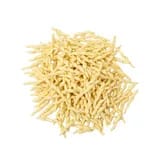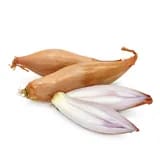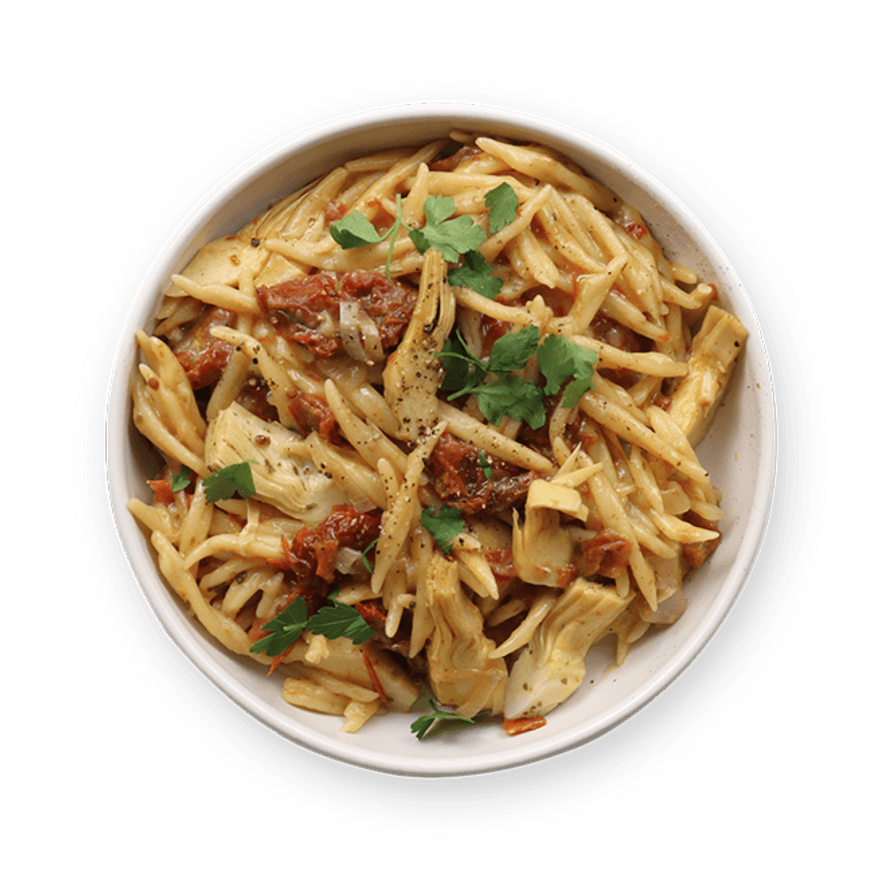Artichoke & Sun-Dried Tomato Pasta
390 reviewsA quick & deliciously flavoursome pasta dish, what could be better?

Ingredients
Utensils
Stovetop, Pot (small), Frying pan
recipe

Step 1
In a pot of salted boiling water, cook the pasta according to package instructions. Once cooked through, reserve a small ladle of cooking water & drain the pasta. Keep warm.

Step 2
Meanwhile, peel & finely mince the shallots.

Step 3
Drain & slice the sun-dried tomatoes into thin strips.

Step 4
Drain & slice the artichoke hearts in halves or quarters depending on their size. Set aside.
Step 5
Heat a drizzle of olive oil in a pan, over medium heat. Add the shallots & sauté for 2-3 min, stirring.
Step 6
Add-in the sun-dried tomatoes. Season with pepper & sauté for another 2-3 min.

Step 7
Add the drained pasta, artichokes, grated parmesan cheese & reserved pasta cooking water. Stir to combine & continue cooking for another 2-3 min, until the sauce lightly thickens.

Step 8
Serve the creamy artichoke & sun-dried tomato pasta in a plate. Top with fresh parsley, if you have some & re-season to taste. Enjoy !
Personal notes
Add your own flavor!
Nutrition facts
Average estimated amount for one serving
| Energy | 515 cal. |
| Fat | 13 g |
| Carbohydrates | 73 g |
| Protein | 21 g |
| Fiber | 10 g |
Values are based on an average estimate for one serving. All nutrition information presented on Jow is intended for informational purposes only. If you have any concerns or questions about your health, please consult with a health-care professional.
On average, one serving of the recipe "Artichoke & Sun-Dried Tomato Pasta" contains 515 Energy, 13 g of Fat, 73 g of Carbohydrates, 21 g of Protein, 10 g of Fiber.
Price per portion
| € | Nos recettes à -2 € par portion |
| €€ | Nos recettes entre 2 € et 4 € par portion |
| €€€ | Nos recettes à +4 € par portion |
Please note, the price above is dependent on your grocer and the available products in the grocery store you chose.
Scores


A Nutri-score
The Nutri-score is an indicator intended for understanding nutritional information. Recipes or products are classified from A to E according to their food composition to promote (fiber, proteins, fruits, vegetables, legumes, etc.) and foods to limit (energy, saturated fatty acids, sugars, salt, etc.).
C Green-score
The Green-score is an indicator representing the environmental impact of food products. The recipes or products are classified from A+ to F. It takes into account several factors on the pollution of air, water, oceans, soil, as well as the impacts on the biosphere. These impacts are studied throughout the product life cycle.
Retrieving reviews...


